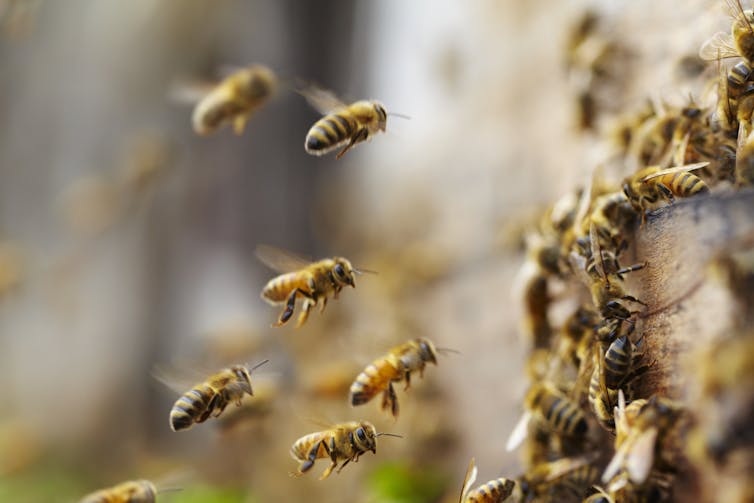
Curious Kids is a series for children of all ages. If you have a question you’d like an expert to answer, send it to [email protected].
Why do bees have queens? – Rhylie, age 8, Rosburg, Washington
When you think “bee,” you likely picture one species that lives all over the world: the honey bee. And honey bees have queens, a female who lays essentially all of the eggs for the colony.
But most bees don’t have queens. With about 20,000 species of bees worldwide – that’s about 2 trillion bees – the majority of them don’t even live in groups. They do just fine without queens or colonies.
Instead, a single female lays eggs in a simple nest, either inside a plant stem or an underground tunnel. She provides each egg with a ball of pollen mixed with nectar that she collected from flowers, and she leaves the eggs to hatch and develop on their own. She doesn’t have anyone to help with this process.
These bee species, often spectacularly beautiful, are important pollinators of many crops and plants, though most people aren’t even aware of them.
Since lots of bees successfully live without a queen, what is it that queens provide for the bee species that do have them? We are behavioral ecologists who study social insects, and this question is at the heart of our research.

A bee colony may have many thousands of workers who support the single queen.
bo1982/iStock via Getty Images Plus
A queen, workers and drones
Along with honey bees, two other kinds of bees also have queens: bumble bees, which are found on all continents except Australia and Antarctica, and stingless bees, which are found primarily in tropical areas.
One honey bee colony – also called a hive – may have more than 50,000 bees, while bumble bee colonies usually have just a few hundred bees. Stingless bee colonies are often small, but some are as large as the biggest honey bee hives.
These bees’ social structures have two more things in common besides the egg-laying queen: the female workers who care for the colony, and the males, sometimes called “drones.”
Notice the males are not included in the “worker” group. Males generally don’t help collect nectar or pollen, protect and maintain the hive, or care for the young larvae. The females do all of those jobs.
Instead, the males have one task: to find and then mate with a female who may become a future queen. After building their strength, males leave the hive to join thousands of other drones to wait for new queens that are also looking for mates. If males are lucky enough to mate, they die soon afterward. In contrast, females typically mate with many different males before starting their lives as egg-laying queens.
Female worker bees do pretty much all the work.
The isolated queen
Maybe you imagine a queen as…



